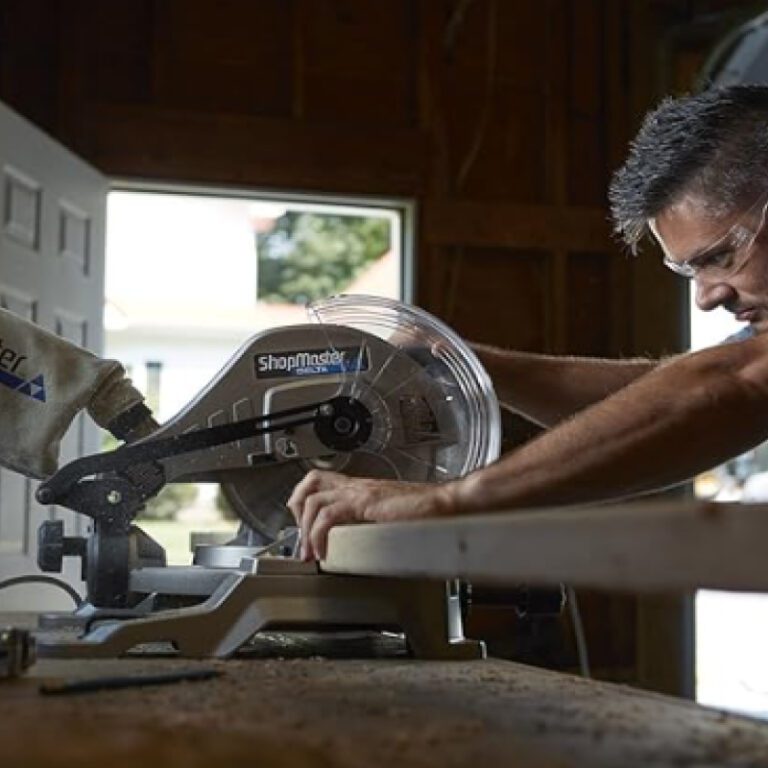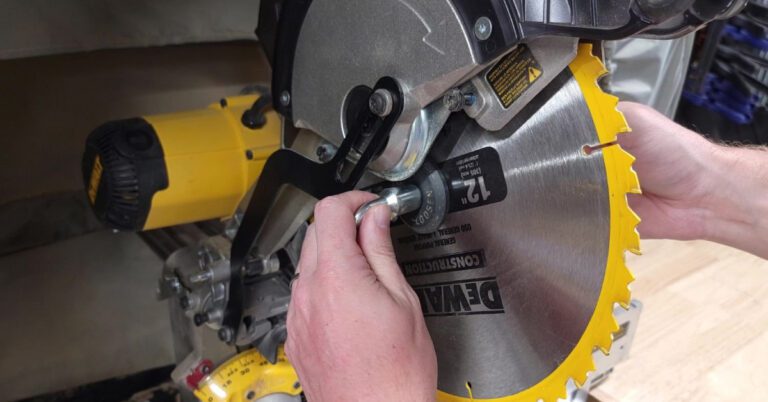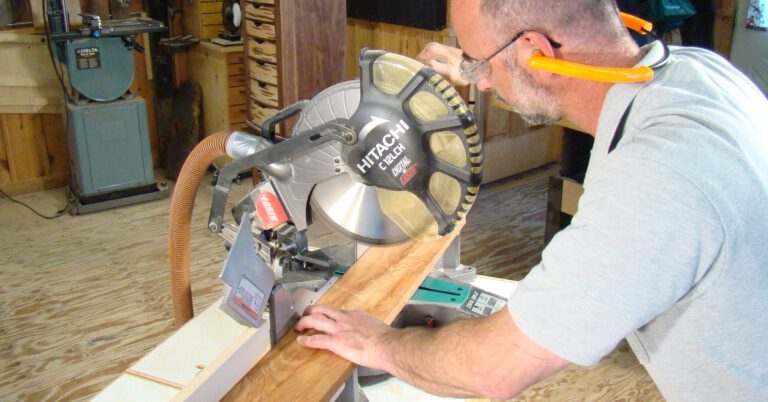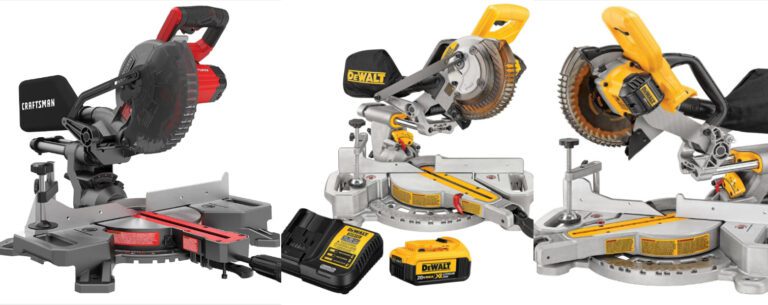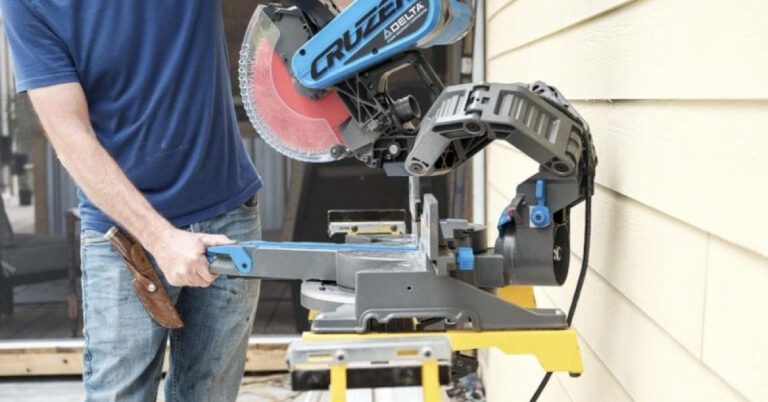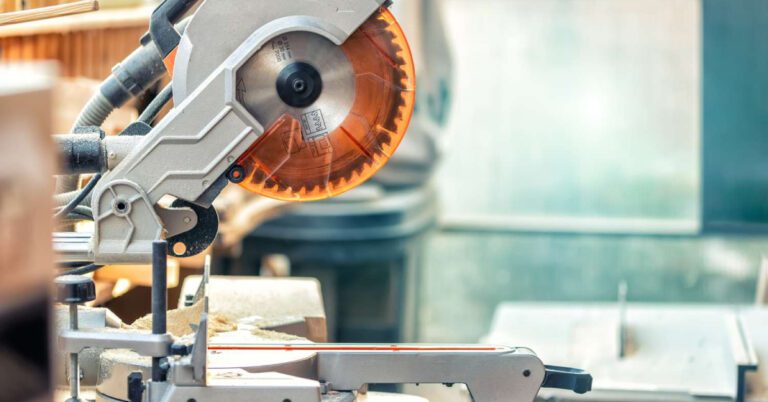In the realm of woodworking, few tools hold as much importance and versatility as the miter saw, and behind every precise cut lies the backbone of a sturdy miter saw stand. For men entrenched in their woodworking pursuits, navigating the array of options for miter saw stands is paramount to optimizing their craft. The right miter saw stand not only ensures stability and accuracy but also enhances workflow and safety within the workshop. In this comprehensive guide, we delve into the intricacies of miter saw stands, offering insights and considerations tailored to seasoned craftsmen eager to elevate their woodworking setups. From the anatomy of a miter saw stand to essential features and construction materials, this article serves as the ultimate roadmap for those poised to embark on the journey of selecting or crafting their ideal miter saw stand.
Understanding the Miter Saw Stand
Definition and Purpose of a Miter Saw Stand:
A miter saw stand is the foundation upon which a miter saw is mounted, providing a stable platform for accurate cutting in woodworking projects. Its primary purpose is to support the weight of the saw and workpieces while allowing for precise angle and bevel cuts. Essentially, it serves as a portable workstation, enabling woodworkers to bring their cutting operations to various job sites or within their own workshops with ease and efficiency.
Types of Miter Saw Stands Available in the Market:
In the market, several types of miter saw stands cater to the diverse needs of woodworkers. These include traditional folding-leg stands, compact rolling stands, and customizable DIY options. Folding-leg stands are characterized by their collapsible design, making them easy to transport and store. Compact rolling stands, equipped with wheels, offer enhanced mobility and stability, ideal for moving between job sites. DIY options provide the flexibility to tailor the stand to specific requirements, often incorporating features like extensions, storage compartments, and adjustable heights.
Advantages and Disadvantages of Each Type:
Folding-leg stands boast portability and space-saving benefits, making them ideal for contractors or woodworkers with limited workshop space. However, they may sacrifice stability compared to heavier, more stationary counterparts. Compact rolling stands excel in maneuverability. Yet they may lack the robustness of fixed stands, potentially compromising stability during heavy-duty cutting tasks. DIY miter saw stands offer unparalleled customization options, enabling craftsmen to design a stand tailored to their unique needs and preferences. However, they require time and effort to construct, and the quality of the final product depends on the builder’s skills and materials used. Understanding the nuances of each type empowers woodworkers to make informed decisions based on their specific workflow, space constraints, and project requirements.
Key Miter Saw Stand Features to Consider
Stability and Sturdiness:
Stability and sturdiness are paramount considerations when selecting a miter saw stand. A solid, well-built stand provides a secure foundation for the saw and workpieces, minimizing vibrations and ensuring precise cuts. Look for features like robust construction, reinforced legs, and adjustable leveling feet to maintain stability on uneven surfaces and under heavy loads.
Portability and Ease of Transportation:
For woodworkers who frequently move between job sites or have limited workshop space, portability is key. Opt for a miter saw stand with integrated wheels, collapsible legs, and lightweight materials for effortless transportation and storage. Consider the ease of folding and unfolding mechanisms to streamline setup and breakdown procedures on-site.
Compatibility with Different Miter Saw Models:
Ensure that the miter saw stand is compatible with a variety of miter saw models and sizes to accommodate future upgrades or changes in equipment. Look for adjustable mounting brackets, universal tool mounts, and versatile clamp systems that provide a snug and secure fit for different saws without the need for additional adapters or modifications.
Weight Capacity:
Evaluate the weight capacity of the miter saw stand to support both the saw itself and the materials being cut. Choose a stand with a weight capacity that exceeds the combined weight of the saw and typical workpieces to prevent overloading and maintain stability during operation. Heavy-duty steel construction and reinforced support beams are indicators of a stand’s ability to handle substantial loads.
Material and Build Quality:
The material and build quality of the miter saw stand directly impact its durability and longevity. Look for stands constructed from high-grade steel or aluminum for superior strength and corrosion resistance. Welded joints, powder-coated finishes, and rust-resistant hardware contribute to long-term durability, ensuring reliable performance in various work environments.
Additional Features:
Consider additional features that enhance functionality and versatility in the workshop. Extension wings or rollers provide ample support for long workpieces, while material stops and clamping systems facilitate precise and repeatable cuts. Integrated storage compartments or tool trays keep essential accessories organized and within reach, maximizing efficiency and workflow during woodworking projects. Evaluate these supplementary features based on their compatibility with your specific cutting tasks and workspace requirements.
Miter Saw Stand Factors to Evaluate Before Making a Purchase
Workspace and Project Requirements:
Assessing your workspace limitations and project requirements is crucial in selecting the right miter saw stand. Consider the size of your workshop or job site and determine the available space for maneuvering and storage. Evaluate the types of projects you typically undertake and the size of materials you commonly work with to ensure the stand’s dimensions and features align with your workflow and cutting needs.
Frequency of Use and Mobility Needs:
Understanding the frequency of use and mobility requirements is essential for determining the level of portability and durability needed in a miter saw stand. If you frequently move between job sites or work in different locations, prioritize stands with lightweight construction, integrated wheels, and quick-release mechanisms for effortless transportation and setup. For stationary workshops with consistent project demands, prioritize stability and sturdiness over portability.
Budget Considerations:
Establishing a budget early in the decision-making process helps narrow down options and prevents overspending on features that may not be essential for your woodworking needs. Compare prices across different brands and models while considering the quality, features, and longevity offered by each option. Keep in mind that investing in a durable, high-quality miter saw stand can yield long-term savings by minimizing the need for replacements or repairs.
User Reviews and Recommendations:
Leverage user reviews and recommendations from fellow woodworkers and industry professionals to gain valuable insights into the performance and reliability of specific miter saw stand models. Platforms like online forums, woodworking communities, and review websites provide firsthand experiences and unbiased opinions on factors such as durability, ease of assembly, and overall satisfaction with the product.
Brand Reputation and Warranty:
Consider the reputation of the brand and the availability of warranty coverage when evaluating miter saw stand options. Established brands with a track record of producing high-quality woodworking tools and accessories often prioritize customer satisfaction and offer comprehensive warranty protection against manufacturing defects and premature failures. Research the brand’s reputation for customer service and responsiveness to ensure prompt resolution of any issues that may arise post-purchase.
Top Miter Saw Stand Brands and Models
Overview of Reputable Brands Known for Quality Miter Saw Stands:
Several reputable brands are renowned for producing top-quality miter saw stands that cater to the diverse needs of woodworkers. Brands such as DEWALT, Bosch, Makita, and Milwaukee have established themselves as leaders in the woodworking industry, consistently delivering innovative solutions and durable products designed to enhance precision and efficiency in cutting tasks.
Comparison of Popular Models Based on Features and Customer Feedback:
When comparing popular miter saw stand models, factors such as build quality, portability, stability, and additional features play a significant role in determining their suitability for different applications. Models like the DEWALT DWX723 and Bosch T4B Gravity-Rise stand out for their robust construction, adjustable height, and compatibility with a wide range of miter saws. The Makita WST06 Compact Folding Miter Saw Stand and Milwaukee 48-08-0551 are praised for their portability and ease of transportation, making them ideal for contractors and woodworkers who frequently move between job sites.
Recommendations for Different User Needs and Budgets:
For users seeking a balance of performance and affordability, the DEWALT DWX726 and Bosch GTA3800 Folding-Leg Miter Saw Stands offer reliable stability and versatility at competitive price points. Those with higher budgets and specific requirements may find the Bosch T4B Gravity-Rise Miter Saw Stand or the DEWALT DWX724 Compact Miter Saw Stand worth the investment, thanks to their premium features, durability, and long-term reliability. Ultimately, the choice of miter saw stand should align with the user’s workflow, project demands, and budget constraints, ensuring optimal performance and satisfaction in woodworking endeavors.
Miter Saw Stand Maintenance and Care Tips
Proper Storage When Not in Use:
When the miter saw stand is not in use, it’s essential to store it in a clean, dry environment to prevent corrosion and damage. Collapse the stand to its compact form and secure any loose components or accessories. Store the stand in a designated area away from moisture, extreme temperatures, and direct sunlight to prolong its lifespan and maintain structural integrity.
Cleaning and Lubrication for Smooth Operation:
Regular cleaning and lubrication are key to ensuring smooth operation and longevity of the miter saw stand. Remove any debris, sawdust, or buildup from the stand’s surfaces, joints, and moving parts using a soft brush or cloth. Apply a light coat of lubricant to pivot points, hinges, and locking mechanisms to prevent friction and facilitate effortless adjustments during use.
Inspection for Any Signs of Wear and Tear:
Periodically inspect the miter saw stand for any signs of wear, damage, or structural weaknesses that may compromise its stability and safety. Check for loose bolts, cracked welds, or bent components, and promptly address any issues to prevent further deterioration. Pay close attention to the condition of the legs, support arms, and mounting brackets to ensure they remain sturdy and secure.
Repair and Replacement of Damaged Components:
In the event of damage or wear beyond normal maintenance, it’s crucial to promptly repair or replace damaged components to restore the miter saw stand’s functionality and safety. Refer to the manufacturer’s instructions and guidelines for proper disassembly, repair, and reassembly procedures. Replace worn-out or damaged parts with genuine replacement components to maintain compatibility and structural integrity. Consider seeking professional assistance for complex repairs or structural issues to ensure the stand remains safe and reliable for future use.
DIY Miter Saw Stand Projects
Introduction to Building Your Own Miter Saw Stand:
Building your own miter saw stand offers the opportunity to customize a workspace tailored to your specific needs and preferences. Whether you’re a seasoned woodworker seeking a unique design or a novice craftsman eager to embark on a rewarding DIY project, constructing your miter saw stand allows for creativity, flexibility, and cost savings compared to purchasing a pre-made stand.
Step-by-Step Instructions for a Basic DIY Miter Saw Stand:
To build a basic DIY miter saw stand, start by gathering the necessary materials and tools, including lumber, screws, bolts, a saw, drill, and measuring tape. Begin by constructing the base frame using sturdy lumber, ensuring it provides ample support and stability for the saw and workpieces. Add support braces and cross members to reinforce the structure and distribute weight evenly. Incorporate adjustable extensions or material supports to accommodate varying workpiece sizes and lengths. Finish by securing the miter saw to the stand using mounting brackets or custom-built platforms, ensuring a snug and secure fit for precise cutting operations.
Tips for Customization and Personalization Based on Workshop Requirements:
Customizing and personalizing your DIY miter saw stand allows for tailored solutions to address specific workshop requirements and project demands. Consider incorporating features such as built-in storage compartments, tool racks, or integrated dust collection systems to enhance organization and efficiency in the workspace. Experiment with different materials, finishes, and design elements to achieve a balance of functionality, aesthetics, and durability. Explore online resources, woodworking forums, and DIY tutorials for inspiration and guidance on advanced customization techniques and innovative design ideas. Embrace the opportunity to unleash your creativity and craftsmanship while building a miter saw stand that reflects your woodworking skills and personality.
Concluding Our Thoughts on the Miter Saw Stand
Selecting the right miter saw stand is crucial for woodworkers seeking precision, efficiency, and safety in their projects. Throughout the selection process, considerations such as stability, portability, compatibility with different miter saw models, weight capacity, material and build quality, as well as additional features, should guide decision-making. By evaluating these factors and prioritizing functionality over aesthetics, woodworkers can make informed choices that optimize their woodworking experience. Encouraging readers to explore various options, research reputable brands, and seek recommendations from fellow craftsmen, the quest for the perfect miter saw stand becomes a rewarding endeavor. Whether opting for a pre-made stand or embarking on a DIY project, finding the ideal stand enhances productivity, precision, and enjoyment in woodworking endeavors.

